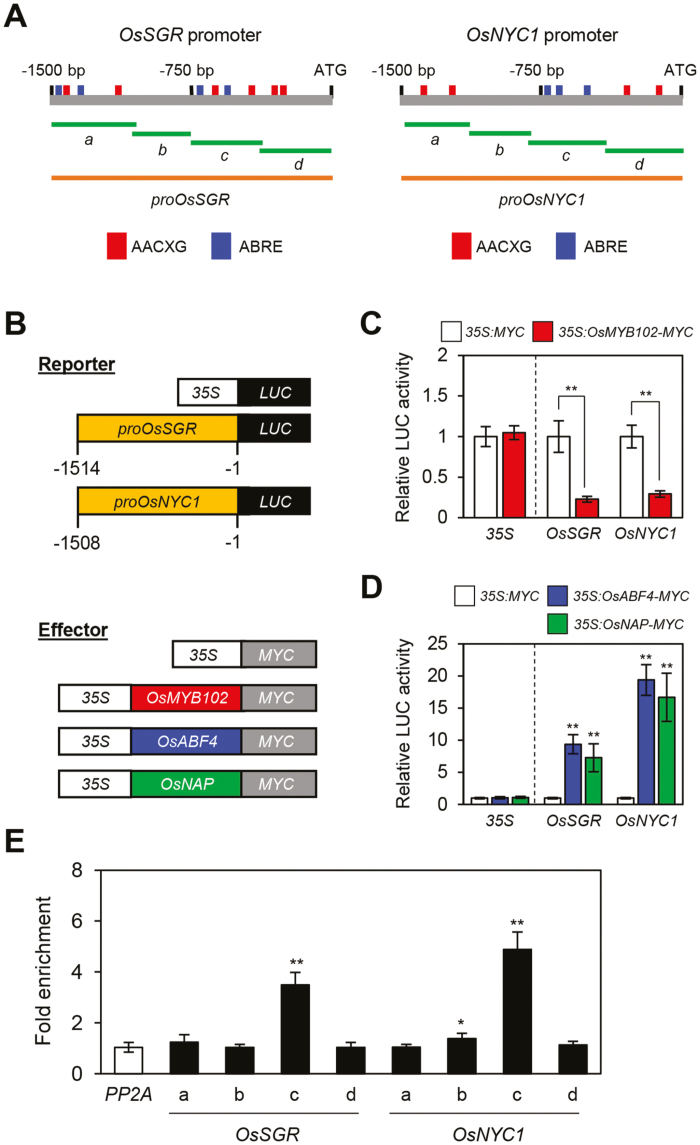Fig. 8.
OsABF4 directly activates the transcription of OsSGR and OsNYC1. (A) The positions of the AACXG and ABRE binding sequences in the promoters of OsSGR and OsNYC1, and the promoter fragments used for the ChIP assay (green horizontal lines) and the transactivation assay (orange horizontal lines). (B) Reporter and effector constructs used in the transrepression and transactivation assays shown in (C) and (D). Each construct also contained the NOS terminator (not shown). (C) The repression of the promoters of OsSGR (–1514 to –1) and OsNYC1 (–1508 to –1) by OsMYB102-MYC in the protoplast transient assay. (D) The activation of the promoters of OsSGR and OsNYC1 by OsABF4-MYC and OsNAP-MYC in the protoplast transient assay. (C, D) The 35S promoter was used as a negative control. (E) OsABF4 binding affinity to the promoter regions of OsSGR and OsNYC1 in planta examined by ChIP assays. OsABF4-MYC was transiently expressed in protoplasts isolated from 10-day-old WT seedlings. Fold-enrichment of the promoter fragments was measured by immunoprecipitation with an anti-MYC antibody (see Methods). PP2A was used as a negative control. (C, D, E) The mean and SD values were obtained from more than three biological samples. Asterisks indicate a significant difference compared with the negative control (Student’s t-test, *P<0.05, **P<0.01).

